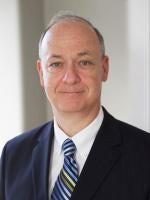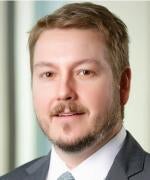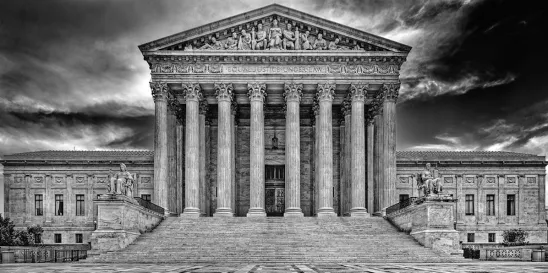Thirty years ago, the U.S. Supreme Court decided the landmark case Daubert v. Merrell Dow Pharmaceuticals, Inc.1 Since then, trial judges engaged in the gatekeeping function for the admissibility of expert testimony have put litigants on notice that expert witnesses must possess fundamental qualifications to offer their opinions. Notwithstanding this notice, recent cases reveal that some litigants have not received the message. This article discusses some of these recent cases to demonstrate that trial courts continue to exclude expert witnesses based upon a lack of qualifications. It then considers whether the Judicial Conference on Rules and Practices’ amendments to Rule 702 will affect trial judge’s gatekeeping role, which could send a new “litigator beware” message.
Background
In Daubert, the court held that under the Federal Rules of Evidence, trial judges, in their gatekeeping role, must answer the following questions when determining whether expert testimony is admissible: 1) is the expert qualified to testify; 2) is the methodology or theory tested, subject to peer-review analysis or publication, with an established rate or error, or generally accepted; and 3) did the expert apply the methodology or theory to the facts of the case?
Methodology continues to be the primary basis for challenging the admissibility of expert testimony. One might have expected that an expert’s qualifications would recede into history as a significant factor in the Daubert analysis. It has not. Litigants continue to proffer experts who are deemed unqualified to opine entirely or whose testimony is limited on the basis of their qualifications.
Recent applications
In Roe v. FCA US LLC, the U.S. Court of Appeals for the Tenth Circuit affirmed the exclusion of two expert witnesses and the grant of summary judgment for the defendant because the plaintiff failed to proffer qualified experts.2 There, the plaintiff alleged a design defect in her vehicle’s shifter assembly that allowed the vehicle to move into a false-park position.3 Because of this position, the plaintiff alleged that the vehicle reversed unexpectedly and caused her serious injuries.4 The plaintiff offered two experts, Steven Meyer and Peter Sullivan, to opine on the functionality and defects of the vehicle, industry standards and regulations, causes of the accident, and the feasibility of an out-of-park alarm to warn the plaintiff of the unsafe position.5 Defendant moved to exclude the experts contending that both were unqualified to testify “to a design defect in the shifter assembly, to opine as to the underlying accident, and to testify as to an out-of-park alarm.”6
The district court held that Mr. Meyer was qualified to offer an opinion regarding the sequence of the accident because of his degree in mechanical engineering, 30 years of experience as an engineer with specialization in vehicular accident reconstruction, numerous peer-reviewed articles and experience evaluating transmissions.7 However, Mr. Meyer was excluded from testifying about whether the shifter assembly contained a design defect because he did not have experience or training in the design of a shifter or transmission, had never been employed by an automotive component supplier, had never published any scholarly material specifically on transmission-related issues and had never provided transmission testimony.8 The court further explained that his claimed experience “studying methodologies relating to the performance of shift assemblies and investigating similar accidents” did not provide enough support to conclude that he had the requisite experience to opine to the shifter assembly defect.9 Additionally, the plaintiff failed to show that Mr. Meyer satisfied any of the Daubert standards, including qualifications, to opine to the effectiveness of an out-of-park alarm.10 With the exclusion of Mr. Meyer from opining to the vehicle’s design defects, the plaintiff’s case rested upon the determination of whether Mr. Sullivan was qualified.11
The court held that Mr. Sullivan was qualified to opine to the design defect because he had 40 years of experience evaluating shift assembly systems.12 The court noted that Mr. Sullivan did not have any experience designing shift assembly systems, and did not have any peer-reviewed material discussing the systems, but that these deficiencies were not dispositive because of his “wealth of experience” working on shift assembly systems.13 Mr. Sullivan, however, was not qualified to opine to the effectiveness of an out-of-park alarm because the plaintiff failed to show that Mr. Sullivan had experience, training, or had reviewed or written any academic scholarship regarding out-of-park alarms.14
Despite the appearance that the plaintiff’s claim was saved by having more than one expert witness, the court held that neither expert employed reliable methodology to prove causation.15 Thus, the plaintiff’s failure to satisfy the qualification and reliability factors of Daubert resulted in summary judgment for the defendant.16
The trial court in Guay v. Sig Sauer, Inc. similarly exercised its gatekeeping function to limit the testimony of a plaintiff’s expert based upon a lack of qualifications.17 The plaintiff offered Peter Villani to testify that the plaintiff’s P320 gun had design and manufacturing defects, which led to the gun misfiring and causing the plaintiff’s injuries.18 Defendant moved to exclude Mr. Villani claiming that he was unqualified to opine to design or manufacturing defects because he was not an engineer and never worked on designing or manufacturing guns.19
The court disagreed with the defense with regard to the design defect claim but agreed that Mr. Villani was not qualified to offer an opinion regarding the manufacturing claim.20 The court noted that Mr. Villani was working “as a primary evidence custodian, senior firearms instructor/armorer, and operations officer with the rank of Major” for the United States Department of Veterans.21 His duties included examining and cleaning the guns used in the department.22 Previously, he managed a shooting range for four years, which required that he clean, repair and hold gun safety classes.23 Mr. Villani was a certified armorer: he received this certification by taking the defendant’s armorer class in which he learned in detail the P320’s components and passed a written exam.24 Finally, Mr. Villani had investigated a similar incident in the past where a police officer was shot after a P320 gun fired without a trigger pull.25 Thus, he was qualified to opine on the functioning and care of the P320 gun and guns in general, and on the defects he personally observed based on his experience with the plaintiff’s P320 gun.26
Regardless of Mr. Villani’s extensive experience, however, the court held that he was not qualified to opine to the manufacturing defects of the P320 gun.27 Mr. Villani suggested that the mold or casting process could have caused the plaintiff’s gun defects.28 However, Mr. Villani did not have any experience or training in firearms manufacturing, or manufacturing processes generally, thus he was unqualified to offer causation testimony on the P320 gun’s defects and how the defects could be fixed.29 Without Mr. Villani’s testimony, the plaintiff’s manufacturing defect claim would have been dismissed. Luckily for the plaintiff, he also offered the testimony of a mechanical engineer who survived a similar attack to his qualifications.30 Thus, the plaintiff survived summary judgment.31
In Godreau-Rivera v. Colopast Corp., the opinion testimony of three of the plaintiff’s experts was limited because the court deemed them unqualified.32 That multidistrict litigation involved a product liability claim for injuries arising from the implantation of a polypropylene surgical mesh device during pelvic floor reconstructive surgery.33 Defendants moved to exclude doctors Rosenzweig, Garely and Mays claiming, among other reasons, that the experts were unqualified.34
The court excluded Dr. Rosenzweig’s testimony regarding informed consent and the insufficiency of defendant’s testing because he lacked the qualifications to offer those opinions.35 Dr. Rosenzweig did not have personal knowledge or a specific state of mind for the plaintiff or the surgeon who implanted the mesh device, thus he was not qualified to opine on the causal relationship between the alleged insufficiencies in the implant’s Instructions for Use (IFU) and the plaintiff’s lack of informed consent.36 He could not testify to the insufficiency of the defendant’s testing because he lacked “experience, education, or knowledge about the appropriate testing a medical device manufacturer should perform on its mesh products.”37 Although these parts of Dr. Rosenzweig’s testimony were excluded, the court did not limit his testimony regarding specific causation, degradation of the device in the plaintiff’s body and her continued complications, and safer alternative designs.38 The court held that Dr. Rosenzweig was qualified because he had performed “over 1,000 pelvic floor surgeries,” ”including more than 300 revision surgeries addressing complications associated with synthetic mesh products, specifically including the removal of [the mesh implant in question],” “published numerous articles and [has] given many lectures on the treatment of urinary incontinence and pelvic organ prolapse,” and reviewed the plaintiff’s medical reports.39
Dr. Garely’s opinion regarding what should have been included in the IFUs was rejected because he lacked experience with product warnings, product labeling and regulatory standards.40 However, the court permitted Dr. Garely to opine as to whether the IFUs contained adequate information about the risks associated with the mesh implants because of his “undisputed expertise in female pelvic health and reconstructive surgery.”41
Finally, the court excluded Dr. Mays’ opinions on the alleged toxicity or irritability of polypropylene resin or antioxidants, which result from the oxidative degradation of the mesh products in question, because he was not a toxicologist.42However, the court found that Dr. Mays’ extensive experience in polymer science, specifically with biomaterials, and review of scientific publications qualified him to opine on tissue responses caused by oxidative degradation of polypropylene mesh products and that oxidative degradation results in a breakdown of mechanical properties of the mesh products.43
Amendments to Federal Rules of Evidence 702
The Committee on Rules of Practice and Procedure (“Committee”) approved two amendments to Rule 702, which were adopted by the Supreme Court and sent to Congress on April 24, 2023.44
First, the conference added “more likely than not” language to the rule to formally adopt the preponderance of the evidence standard for expert evidentiary determinations.45 The Committee adopted this language because many courts have concluded, erroneously, that expert testimony was presumptively admissible, particularly when evaluating whether the expert relied on sufficient facts or data and reliably applied a proper methodology.46 This language ends the ability of courts to conclude that challenges to expert testimony go to weight rather than admissibility.47 Essentially, this added language makes clear that a court must find expert testimony reliable by a preponderance of the evidence for the expert testimony to be admissible. Second, the conference changed the language of subpart (d) to require that “the expert’s opinion reflects a reliable application of the principles and methods to the facts of the case,” replacing the prior phrasing that “the expert has reliably applied the principles and methods to the facts of the case.”48 This amendment “empowers the court to pass judgment on the conclusion that the expert has drawn from the methodology” to bring harmony between the rules and the Supreme Court’s decision in General Electric Co. v. Joiner, 522 U.S. 136 (1997), which held that trial judges must consider the expert’s conclusion.49
The addition of the preponderance of the evidence standard to all aspects of Rule 702 will likely cause trial judges to evaluate an expert’s qualifications more rigorously. Thus, litigants attempting to introduce expert testimony must take heed that, not only does an expert need fundamental qualifications to offer their opinion, but the litigant proffering the expert has the burden to make a sufficient showing of those qualifications to the trial judge to satisfy the preponderance of the evidence standard.
Courts have already cited to the proposed amendments in evaluating the admissibility of expert testimony. They recognize that the amendments clarify how Rule 702 should have been interpreted all along and do not substantively modify the rule. See, e.g., Anderson v. United States of Am. (In re Anderson), No. 15-21681, Adv. No. 21-00042, 2023 WL 2229355, at *3 (Bankr. W.D. Tenn. Jan. 19, 2023 & Jan. 20, 2023) (citations omitted) (“Though not yet in effect, Rule 702 in its newest form and the associated Committee Notes may be relied upon and cited to as persuasive authority ‘because, as the Committee explains, they are ‘simply intended to clarify’ how Rule 702 should have been applied all along.’”). It is clear that the amendments apply to all of the “reliability-based” requirements, including that the proffered expert be appropriately qualified. See, e.g., Abdelsayed v. N.Y. Univ., No. 17-CV-9606, 2023 WL 4705999, at *4 (S.D.N.Y. July 24, 2023).
Daubert challenges to an expert’s qualifications have not receded into history as an insignificant factor in the trial judge’s gatekeeping role. Some litigants still proffer experts who are deemed unqualified to opine or whose testimony is limited on the basis of their qualifications. A survey of recent cases reveals that experts who may appear qualified to opine on one type of claim are limited or fully excluded if they lack specific qualifications related to each aspect of their opinions. With the forthcoming amendments to Rule 702 making clear that the burden is on the proffering litigant to demonstrate that the particular expertise of their expert will “help the trier of fact,”50 litigants should carefully consider whether a potential expert has sufficient qualifications to weigh in on each claim he or she intends to address.
Natalie E. Turney, a 2023 Phillips Lytle summer associate and student at Albany Law School (J.D. expected May 2024), contributed to this article.
1 Daubert v. Merrell Dow Pharms., Inc., 509 U.S. 579 (1993).
2 Roe v. FCA US LLC, 42 F.4th 1175, 1177, 1180 (10th Cir. 2022).
3 Id. at 1177.
4 Id.
5 Id. at 1177-79.
6Id. at 1179.
7 Roe v. FCA US LLC, No. CIV-19-167, 2021 WL 2640107 (W.D. Okla. May 28, 2021), aff’d, 42 F.4th 1175 (10th Cir. 2022).
8Roe, 2021 WL 2640107, at *7.
9Id.
10Id. at *8.
11 Smith v. Cent. Mine Equip. Co., 876 F. Supp. 2d 1261, 1267-68 (W.D. Okla. 2012) (“In order to prevail on [a] claim [of defective design] under Oklahoma law, plaintiff must prove: 1) the product was defective such that it was dangerous to an extent not contemplated by an ordinary consumer of the product, 2) the defect existed at the time it left the defendant’s possession or control, and 3) the defect was the proximate cause of the plaintiff’s injuries.”), aff’d, 559 F. App’x 679 (10th Cir. 2014).
12Roe, 2021 WL 2640107, at *8.
13Id.
14Id. at 9.
15Roe v. FCA US LLC, 42 F.4th at 1180-83.
16Id. at 1183.
17Guay v. Sig Sauer, Inc., 610 F. Supp. 3d 423, 426 (D.N.H. 2022).
18Id. at 427.
19Id. at 429.
20Id. at 427-30.
21Id. at 428.
22Id. at 429.
23Id. at 428.
24Id.
25 Id.
26Id. at 429-30.
27Id. at 430.
28Id.
29Id.
30 Id. at 432-34.
31Id. at 434
32 Godreau-Rivera v. Coloplast Corp., 598 F. Supp. 3d 196, 205-16 (D. Del. 2022).
33 Id. at 203.
34Id. at 205-15.
35 Id. at 208-09.
36Id. at 208.
37Id. at 209.
38 Id. at 205-09.
39 Id. at 205.
40 Id. at 210-11.
41Id. at 210.
42Id. at 214-15.
43Id.
44 Congressional Rules Package - April 2023, United States Courts (Apr. 24, 2023), https://www.uscourts.gov/sites/default/files/2023_congressional_package_april_24_2023_0.pdf.
45 Id. (quoting Fed. R. Evid. 702 (effective Dec. 1, 2023).
46Report of the Advisory Committee on Evidence Rules Before the Committee on Rules of Practice and Procedure of the Judicial Conference of the United States, United States Courts (May 15, 2022), https://www.uscourts.gov/sites/default/files/evidence_rules_report_-_may_2022_0.pdf (memorandum to the Standing Committee on Rules of Practice and Procedure explaining that the Committee on Evidence Rules unanimously gave final approval to the proposed amendment to Rule 702).
47 Id.
48Id. note 44 (quoting Fed. R. Evid. 702(d) (effective Dec. 1, 2023) & Fed. R. Evid. 702(d) (effective until Dec. 1, 2023))
49Id. note 46.
50Fed. R. Evid. 702(a).





 />i
/>i
